Menu
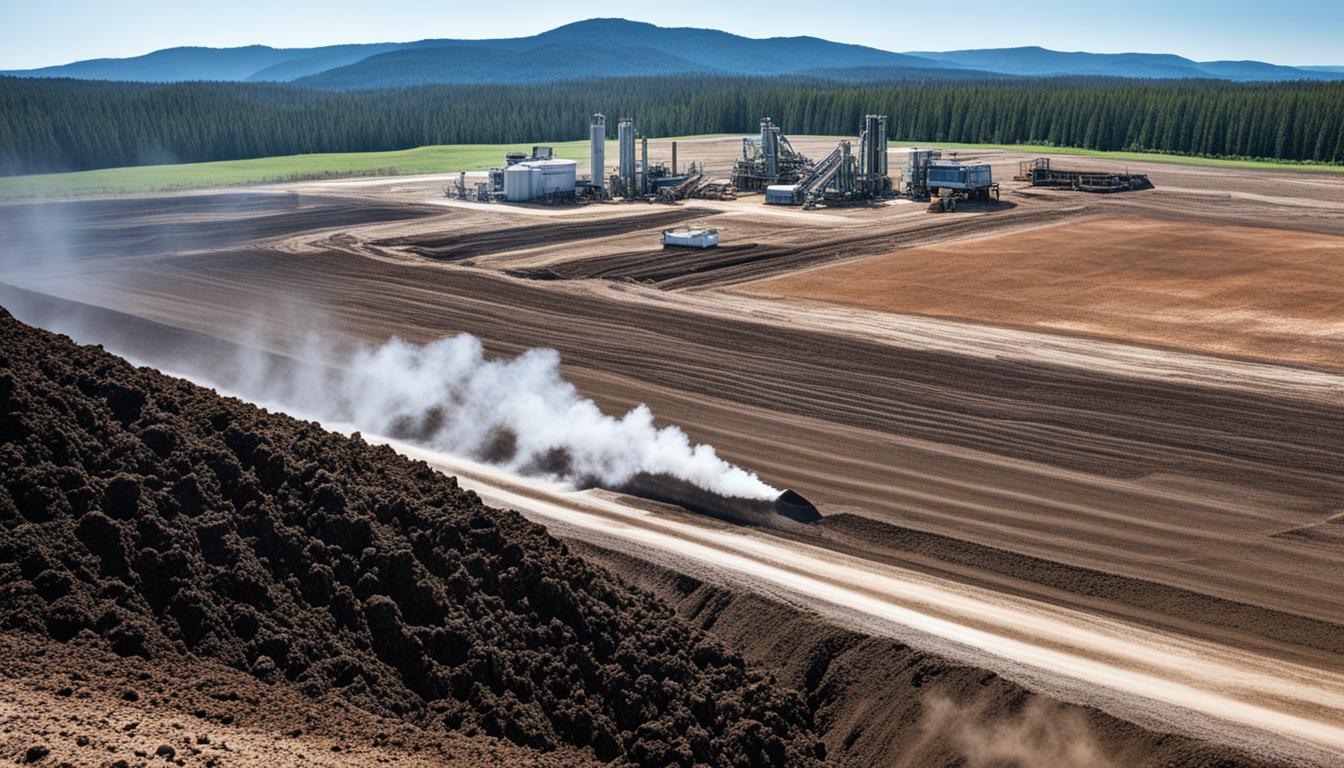
Did you know the U.S. Environmental Protection Agency (EPA) can fine you up to $37,500 per day if you don’t clean up polluted soil? This shows how vital it is to use good soil cleaning methods. Soil contamination can have big bad effects on the environment and health if we don’t fix it. There are many types of clean-up methods available, such as biological, chemical, and physical. Each is designed for certain types of pollution and places.
Soil cleaning is key to fixing land that has been made dirty. Take the Aberdeen Proving Grounds, for instance. There, they used new ways to clean up, making less dangerous waste and recycling a lot of the polluted soil. This shows we can make good progress in protecting our environment and making the land safe again.
There are three main ways to clean up soil: on the spot (in-situ), off the spot but still there (ex-situ), or moving it somewhere else to clean (off-site). Some methods are quick and cheap, while others take longer and cost a bit more. But they all play a big part in cleaning up the mess and making things better for nature. Whether it’s using nature’s own power through bioremediation or advanced chemicals, all these methods help create a safer, greener world.
Soil remediation is key for our environment’s health. As Dr. Charles E Kellogg said, “There can be no life without soil and no soil without life; they have evolved together.” His words show how important it is to restore our soil.
Success stories, like the one at Aberdeen Proving Grounds, inspire us. In this project, 1700 yd3 (1300 m3) of waste was cut. It reduced hazardous waste by 700 yd3 (536 m3). Plus, 75 trees were saved and wood from trees helped heat eight homes for a year.
Recycling also had a big impact. It reused 15,000 lbs (6.8 t) of aluminium and 14 × 103 tons (12 × 103 t) of soil. This shows how important recycling is for effective soil cleanup projects.
Phytoremediation is impressive due to its low costs. It can save 60%-80% compared to traditional methods. The USA spends $300 to $500 to landfill soil by the ton. Plus, the market for cleaning the environment is growing. So, saving money and being good for the Earth is crucial.
| Project/Method | Results | Benefits |
|---|---|---|
| Aberdeen Proving Grounds | Reduction of 1700 yd3 of waste, 700 yd3 of hazardous waste | Saved 75 trees, energy equivalent to 8 homes, recycling success |
| Phytoremediation | Cost savings of 60%-80% | Efficiency, reduced soil landfilling costs |
| Global Remediation Market | Projected value of USD 123.13 billion by 2022 | Economic growth, advanced remediation techniques |
Many different methods, like bioremediation, are available. Companies like Environmental Works offer these services. Their wide range of options is crucial for dealing with various contamination issues. This mix ensures an effective strategy and highlights soil remediation’s essential role.
Soil contamination is a big problem for our planet and for people’s health. To fight it, we need to know where these pollutants come from and what they do. Let’s look at these critical points closely.
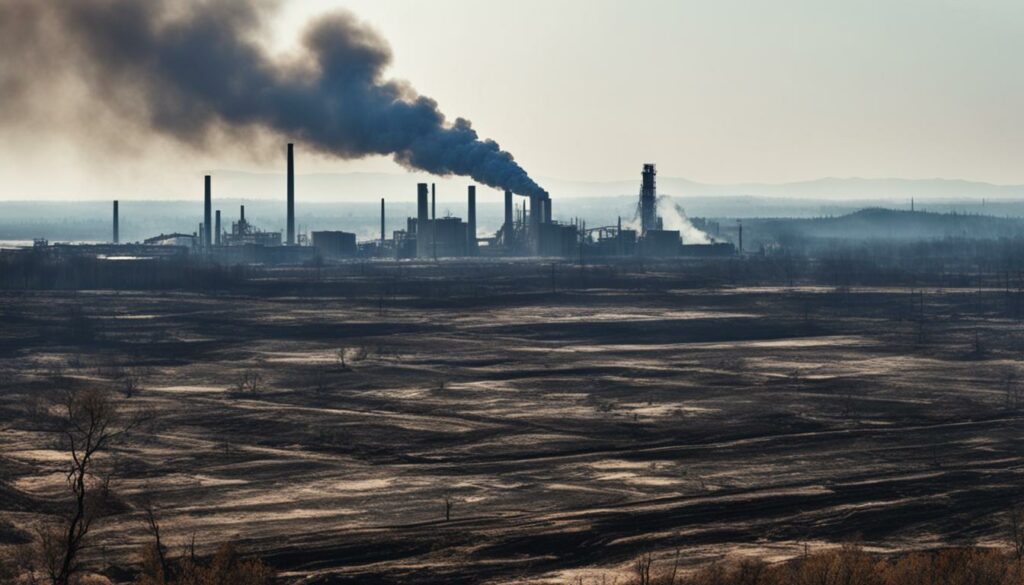
Bad agents in the soil come from many sources. They include:
These pollutants stay in the soil for a long time. They hurt our planet and us. It’s hard to get rid of them, showing why we must protect our earth.
Soil woes have various beginnings. Some common causes are:
Each cause brings its own set of dangers. For example, too much fertiliser leads to too many nitrates. Knowing the source helps us clean the soil better.
Bad soil can really harm us and our world. Health issues it can cause are:
This dirty soil also messes up plant life and lowers the soil’s diversity. Harmful stuff can then get into our water. That means more danger. The bad soil can even break down buildings over time.
We really need to be active in managing and fixing soil problems. Knowing about the dangers and how they happen is key. It keeps our home safe and our people healthy.
| Key Statistics | Details |
|---|---|
| Superfund Penalties | Up to $37,500 per day for cleanup failures |
| Bioremediation Cost Efficiency | Generally cheaper but time-consuming |
| Remediation Duration | Varies from one day to several years |
| Influence Factors | Extent and depth of contamination, chosen methods |
| Concrete Deterioration | Caused by pollutants like chlorides and sulphates |
Soil remediation is vital when contamination can harm nature or people. It includes actions to treat soil pollution well. Sources of this pollution range from industrial sites to oil spills and more.
Dangerous materials like heavy metals and chemicals in the soil show the need for cleanup. These substances can badly affect people’s health, so fast action is key.
There are different ways to treat polluted soil. These include removing it, using natural processes, or advanced technologies. Each method fits different types of contamination.
Heating the soil or using chemicals is part of some treatments. Others involve adding helpful microorganisms. These methods aim to either destroy or safely contain pollutants.
Following regulatory standards for soil quality is a must. The EPA can fine groups that should clean up pollution but don’t. This is part of their work since 1980.
Soil remediation is all about protecting human health. It focuses on using effective, affordable, and quick solutions. This helps in keeping the land safe for everyone.
Bioremediation is now a leading way to clean up damaged areas without a big cost. It uses tiny life forms and plants to get rid of harmful stuff. This makes it perfect for nature-friendly cleanups of many types of pollution.
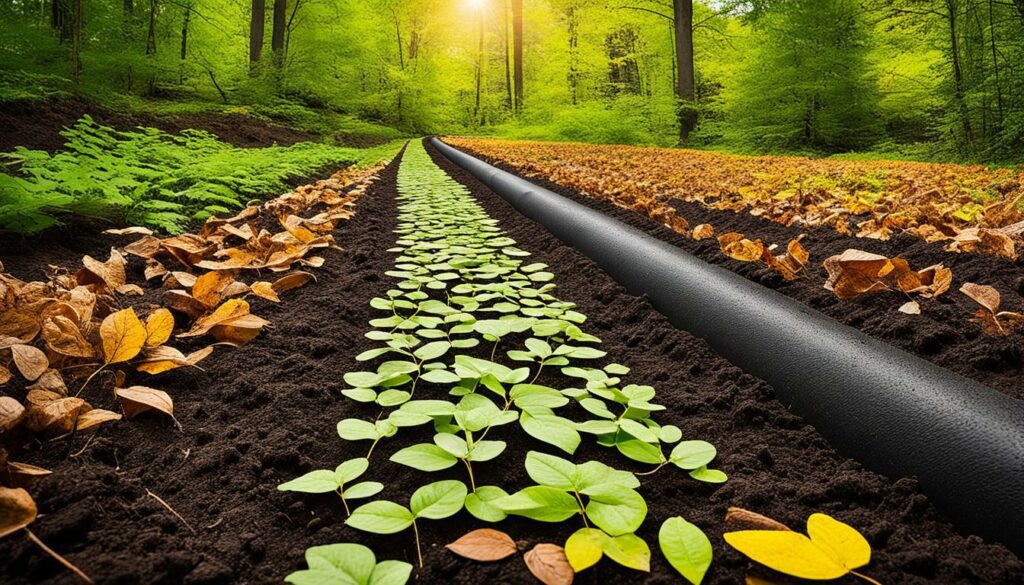
There are several bioremediation methods. Each one is good for dealing with a different kind of mess:
Bioremediation is great, but it’s not perfect. Here are its main points:
| Advantages | Disadvantages |
|---|---|
| Cost-effective compared to traditional methods. | Pollutants may enter the food chain. |
| Uses naturally occurring microorganisms and plants, which cuts costs. | May not work for every type of dirt or really bad pollution. |
| Helps the land and nature heal back to normal over time. | Needs just the right surroundings to work best. |
| Works well in cleaning up big places. | Can be slower than chemical cleaning methods. |
Phytoremediation is an eco-friendly way to clean up polluted sites. It works by using plants’ natural abilities. This helps remove harmful substances, stores carbon, and supports more plant and animal life.
There are different types of phytoremediation. These include phytoextraction, phytostabilisation, phytovolatilisation, and rhizofiltration. Each type allows plants to clean up pollution in different ways:
There are many good things about using plants for cleanup. It’s safe, makes places look better, and it’s cheaper than other methods. Here’s a comparison:
| Parameter | Phytoremediation | Conventional Methods |
|---|---|---|
| Cost per acre | $60,000 – $1,000,000 | $240,000 – $6,000,000 |
| Site disruption | Minimal | Massive |
| Timeframe | Several years | Shorter |
But, there are also some downsides to using phytoremediation. It can take a long time to clean up, depending on how much pollution there is and how fast the plants grow. For example, it took seven years for some pollution levels to go down using trees. Additionally, there’s a risk that the pollutants might get into the food chain through the plants, which is a big challenge.
Chemical remediation is key in treating soil contaminated by heavy metals and organic substances. It uses oxidation an reduction to change pollutants into less harmful forms. This is vital for managing soil pollution.
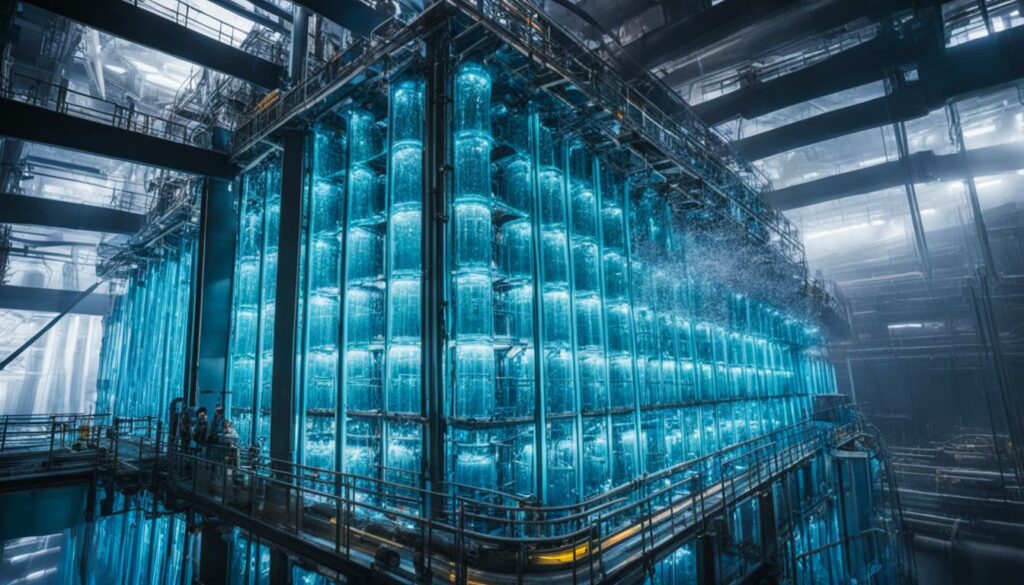
Oxidation and reduction are key steps in chemical remediation. They work by adding or removing oxygen from pollutants. This changes them into safer compounds. These steps are crucial in effective soil clean-up.
Soil flushing helps clean the soil by injecting solutions that dissolve pollutants. This makes contaminants easier to remove. It works best for pollutants not deeply settled in the soil, ensuring thorough cleaning.
Soil vapor extraction removes volatile pollutants from the soil. It uses vacuum pumps to pull out vapours from the ground. When done correctly, it lowers harmful vapours in the air, helping to keep the environment and people safe.
In environmental remediation, physical techniques are key in handling soil contamination. These are used for dealing with lots of hazardous materials. They work well for getting rid of contaminated soil and putting up soil barriers to stop more contamination.
The major way to treat pollution is by digging up the bad soil. This means carefully moving the dirt from a site to safe places for disposal. Companies like Environmental Works deal with lots of cleanups every year, taking out things like heavy metals, oil, and other dangers. This method is good for when pollution is at the surface and can be easily reached.
Soil capping is another important method. It uses a barrier over the bad soil to keep toxins from spreading. This is crucial in places with a lot of risky materials, like asbestos or radioactivity. EWI is skilled at using these barriers to keep pollutants trapped, ensuring no harm to people or nature.
Different techniques are chosen based on the pollution and site. For example, using walls alongside digging can really help control how pollution spreads. This keeps the soil safe for longer, helping the environment. Here’s a table comparing these important methods:
| Technique | Application | Effectiveness | Common Contaminants |
|---|---|---|---|
| Excavation and Removal | Surface and near-surface contamination | High | Heavy metals, VOCs, petroleum hydrocarbons |
| Soil Capping | High-risk hazardous material sites | Moderate to High | Asbestos, radioactive substances |
It’s important to grasp the details of physical remediation, like digging up bad soil and using soil barriers. Knowing this helps handle soil pollution well and keep our environment safe.
New and innovative ways of cleaning soil promise better results. Microbial nanotechnology and electrokinetic remediation are two such methods. They tackle severe pollution in amazing ways.
Microbial nanotechnology uses tiny living things to clean up soil. It’s really effective in breaking down tough pollutants, like heavy metals. By combining bioremediation with nanotech, it speeds up the cleaning process.
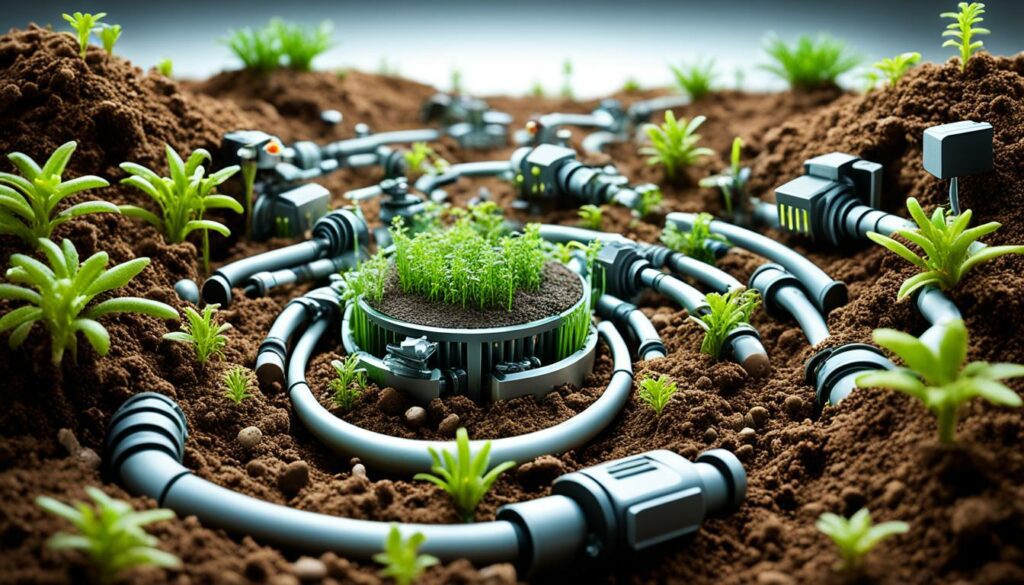
The benefits of using this approach are:
Electrokinetic remediation cleans soil by moving contaminants with electricity. It works well even in hard-to-clean soils. This is where other ways of cleaning struggle.
| Method | Cost per Cubic Meter (USD) | Duration | Effectiveness |
|---|---|---|---|
| Microbial Nanotechnology | $50-$100 | Medium to Long | High |
| Electrokinetic Remediation | $190-$660 | Short | Medium to High |
This method has many good points:
By using these new ways of cleaning soil, we can make big strides in fixing polluted areas. Microbial nanotechnology and electrokinetic remediation are leading us into a bright future of soil care.
Ex-situ techniques treat contaminated soil off-site. They are used for very polluted areas. These methods clean the soil well, making it healthier.
Landfilling used to be common for contaminated soil. Now, we look for greener ways. Good landfilling means following strict rules, stop leachate, and new designs to protect the earth. In Ontario, they see soil as valuable, saving money and helping the earth.
Soil washing cleans soil that has fuel oil or chemicals. It washes soil, then takes the dirty stuff out, and cleans the water used. This makes the soil less harmful and better for plants. Soil washing lets us reuse cleaned soil and it works fast.
Vitrification turns dirty soil into a glass-like substance. It uses heat to lock up harmful stuff. This method handles many kinds of pollution and lasts a long time. But, it is expensive and needs special machines.
These three methods work together to fix dirty soil. They make soil clean, less toxic, and save money. Also, they help look after our planet well.
In-situ remediation helps clean contaminated soil directly at the site. This means less digging and moving soil. It’s a cost-effective and quick way to lower risks to both the environment and health. The main methods used are bioremediation and stabilisation/solidification.
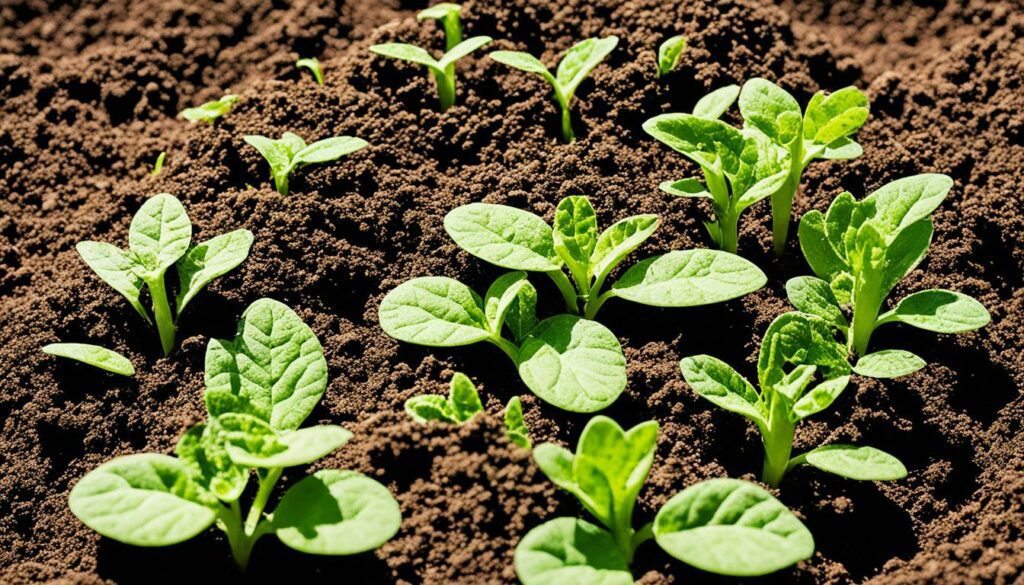
In-situ bioremediation uses natural features to clean up soil. It relies on microorganisms or plants to get rid of or decrease contaminants. For example, bioventing uses air to boost the work of tiny organisms in soil.
Phytoremediation lets plants take in pollutants. This method is good for removing organic contaminants naturally. It’s nature’s way of keeping the soil safe.
Stabilisation and solidification change the state of contaminants in the soil. Mixing them with certain agents makes a solid mass. This stops the harmful substances from moving into the ground or air. Cement, lime, and fly ash are common agents used.
This method is great for fixing heavy metals and other inorganic pollutants. It makes sure the soil stays safe for a long time. Every type of contaminant needs its own special cleanup method. And this technology shows how important that is.
“Different in-situ technologies have varying degrees of effectiveness for different contaminant classes, as summarised in Table 1.”
New in-situ technologies are always being developed. They help clean up soil more effectively. Knowing about each method helps us choose what’s best for the job. Using bioremediation and stabilisation together is a powerful way to protect the environment.
It’s key to know the soil remediation cost and project duration. This info helps in planning and doing remediation work well. Each job is different, based on how much pollution there is and the site’s specific needs.
The environmental remediation market is growing fast. A good example is a project at the Aberdeen Proving Grounds. It cut down 1700 yd3 (1300 m3) of waste and 700 yd3 (536 m3) of dangerous waste.
From 1997 to 2022, the environmental remediation market jumped from USD 15-18 billion to USD 123.13 billion. This leap shows how much we want new ways to clean up pollution. These new methods don’t just work well, they save money too.
Different cleaning methods cost different amounts. Here’s a general idea:
| Technology | Cost (USD) |
|---|---|
| Phytoremediation | 2000–5000/acre |
| Solidification/Stabilisation | 50–330/m³ |
| Bioremediation | 30–100/m³ |
| Chemical Reduction/Oxidation | 190–660/m³ |
| Soil Washing | 120–200/ton |
| Low-Temperature Thermal Desorption | 45–200/ton |
| Incineration | 200–600/ton |
| Vitrification | 700/ton |
| Landfill Disposal | 150–200/ton |
The clean-up work often takes months or years. It goes through many steps. Technologies like phytoremediation are up to 80% cheaper than old ways. So, they are a good choice for big pollution jobs.
Good planning and talking make these projects go well. They help everyone involved understand the soil remediation cost and how long the project will take. Every project needs its own plan for the best and fastest results.
Looking at real-life stories helps us understand soil cleaning better. I will share stories of how different methods have worked.
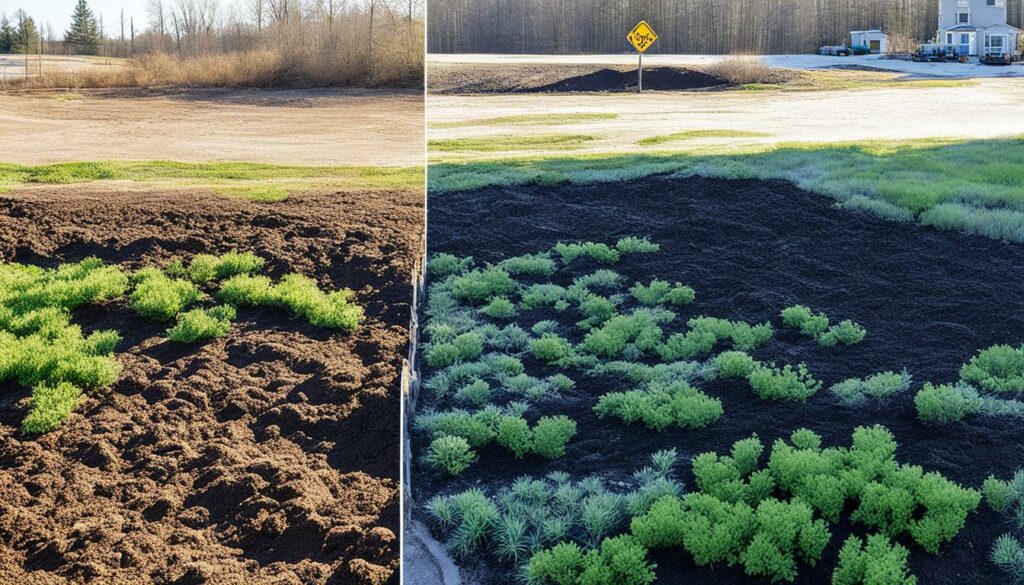
In 2011, a firing range in Andover, MD, had heavy lead pollution. The team used a special approach with different doses in hot spots. They transformed 1100 tons of soil into safe material.
At a former car factory in St. Louis, MO, Blastox® was used in 2010-2011. They reduced the normal amount, from 8% to 4%, and managed over 10,000 tons of soil. This was a big success for making the soil clean.
Chicago, IL, 2011: a factory near a school urgently needed cleaning. The team used Blastox® 215 to treat the soil. They haven’t said how much Blastox® they used. But it showed how new methods can help clean up dangerous areas.
Blastox® is trusted by top organisations like the US EPA and the Army Corps of Engineers. It has passed many tests for safety and clean-up effectiveness.
| Location | Project Description | Outcome |
|---|---|---|
| Andover, MD | Lead TCLP levels treated with a 5% to 2% dose approach | 1100 tons of soil managed as non-hazardous waste |
| St. Louis, MO | Stabilization of soil with reduced Blastox® dose rate (4%) | Over 10,000 tons of soil treated |
| Chicago, IL | Stabilisation of soil leach values using Blastox® 215 | Successful on-site stabilisation near a school |
The report looks at 37 case studies over four books. It talks about different ways to clean the soil, like using special bacteria, treating the water, and cleaning the air around the soil.
It tells us about 35 of these projects’ costs. This helps others plan their own projects better and know what to expect.
Effective soil cleanup takes careful planning to work well. By following key steps, the process can clean the environment and save money too. This keeps the soil’s health up while keeping the costs down.
Planning a project well is the first vital step. This means looking closely at what’s wrong with the soil. This helps pick the right way to clean it up.
Choosing the right tech is key too. Pick methods based on the pollution and where it is. For instance, working on the site might be cheaper than moving the dirt. Even though some methods might take a bit longer, they can be more budget-friendly.
Hiring a skilled contractor can make a big difference. They know how to clean soil in the best way. This means better results and savings in time and money.
Failing to meet clean-up rules can lead to big fines. The EPA can charge up to $37,500 a day for not following the rules. So, sticking to the laws is very, very important.
The Comprehensive Environmental Response, Compensation, and Liability Act (Superfund) mandates the cleanup of abandoned hazardous waste sites, holding liable parties accountable for remediation costs.
Cleaning up the soil can take a day or many years. It all depends on how badly it’s polluted. Making a realistic plan is key to the success of the project.
To sum up, getting soil clean is all about good planning and picking the right tools. Following the law is a must. This way, we can protect nature and keep people safe and healthy.
Understanding environmental rules and new ways to fix soil is key. It helps keep people and the earth safe. The EPA gives guidelines that make soil clean-up easier to manage.
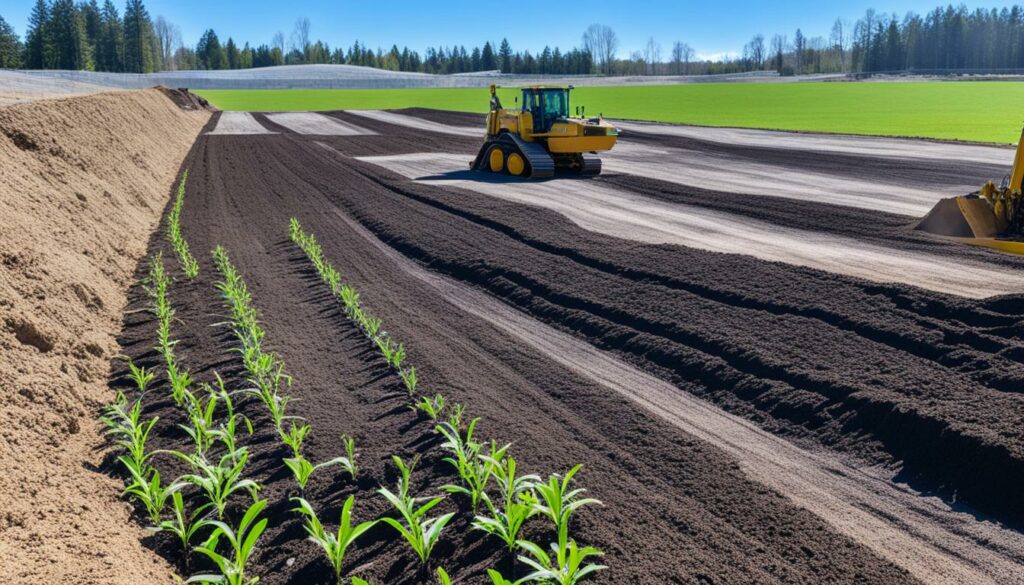
The Superfund Act and the RCRA are two big rules that watch over soil clean-up in the US. They help handle dangerous places and make sure those responsible pay for the mess. Clean-up projects must also stick to the RCRA for safe waste handling.
Following rules means avoiding big fines and making sure the land gets better. When projects stick to the rules, they make sure to get rid of harmful stuff. This makes the land safe to use again. For example, using Blastox 215® has been praised by the EPA for making dangerous waste safe.
| Source of Soil Contamination | Percentage Contribution |
|---|---|
| Industrial Activities and Landfills | 22% |
| Agricultural Sites (Pesticides, Herbicides, Fertilisers) | 30% |
| Oil Spills | 15% |
| Underground Tanks | 12% |
Soil remediation brings big wins for the planet and our wallets. It fixes long-standing pollution issues and breathes life back into damaged areas. A project at the Aberdeen Proving Grounds cut down on 1700 yd³ (1300 m³) of waste. This included 700 yd³ (536 m³) of dangerous waste, keeping the area safe and clean.
Turning dirty land into prime real estate is a massive plus. With the right cleanup, former wastelands can become sought-after spots for homes, hotels, and parks. In Aberdeen, 75 trees were saved thanks to the cleanup. Also, the wood dug up in the process could heat eight homes for a year.
Speaking with our wallets, soil cleanup is a smart move. The industry is booming, from a USD 15 billion market in 1997 to a predicted USD 123.13 billion in 2022. New methods can cut costs by 60% to 80%. Imagine the good when 15,000 lbs (6.8 t) of aluminum and tons of soil goes back into use.
In the end, soil cleanup fixes our past mistakes and shapes a better future. It’s both good for the earth and our economies. So, it’s a key step in our fight for a cleaner, richer world.
Techniques used in soil remediation include bioremediation, phytoremediation, chemical, and physical methods. Each one works differently depending on the pollution’s type and level.
Bioremediation uses tiny organisms like bacteria to break down pollutants in the soil. It’s cost-effective and great for big areas with light pollution.
Phytoremediation has plants absorb and clean up soil pollutants. This method is green and makes the area look nicer. It also helps remove carbon from the air.
Chemical remediation uses reactions to change pollutants, making them less harmful or removing them. It includes soil flushing and vapor extraction.
Physical methods involve digging out and capping the polluted soil. Capping puts a barrier over it to keep dangers away.
Innovative techniques are using tiny tech and electric currents to clean up soil. These new ways aim to reduce waste and recycle more.
Soil cleaning is a must when pollution threatens our nature and health. It’s key for keeping the land safe to use.
The money and time for soil projects vary a lot. It depends on the pollution, method used, and local conditions. Proper planning and study are needed to do it right.
The law, like EPA rules, guides how to clean soil safely and effectively. Following these rules is critical for public and environmental health.
Cleaning soil helps the environment, improves land value, and supports communities. It protects us, our land, and future wellbeing.